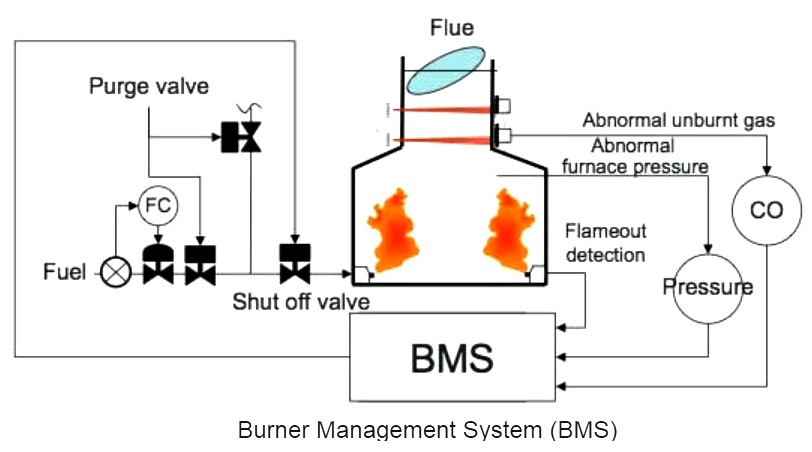A Burner Management System or BMS is a safety system used to assure safe start-up, operation and shut down of process burners.
The BMS can be used in industries like Oil and Gas, Power Generation, Chemical or any other process that uses an industrial burner, furnaces, boilers or other equipment that uses a flame.

The system can monitor flames with flame detectors; it manages igniters, burners and actuators, like shutdown valves.
When the sensors don’t detect the flame or detects unsafe operating conditions, the BMS signals the actuators to stops the flow of fuel to the burners, to inhibit the flames.
In the industry there are 2 methods for implementing a BMS: Separated or integrated
The separated method is the traditional method of implementing a safety instrumented system (SIS) and a basic control system (BPCS). The SIS and BPCS logic solver are separated in two separate equipments.
Also the workstations and the SCADA software for each other are separated. Both systems can communicate with each other using a bus and a common communication protocol.
The integrated method is a new method of implementing the solution. In this method the SIS and BPCS logic solver and workstations are on common equipment. The logic solver is a plc that respects the standards requested by the industry, like SIL3.
Also Read:
If there is a hardware fault, the other system’s in-dependency keeps it functional.
The conveyor sorting machine is widely used in the packing industries using the PLC program…
Learn the example of flip-flop PLC program for lamps application using the ladder logic to…
In this article, you will learn the STAR DELTA programming using PLC controller to start…
Lube oil consoles of rotary equipment packages in industrial process plants are usually equipped with…
Rotating equipment packages such as pumps, compressors, turbines need the lube oil consoles for their…
This article explains how to blink lights in ladder logic with a detailed explanation video…
View Comments
Good article...but it missed two very important terms I.e furnace explosion and implosion.
Apart from ensuring safe boiler start up and shudown functions, the BMS Performs another major function.. that is for boiler furnace protection against explosion and implosion conditions.
The furnace structure can get damaged under explosion or implosion.
On high furnace pressure and low furnace pressure the BMS trips the boiler cutting the fuel supply thereby preventing successive further puffs and disturbances Inside the furnace.
Also BMS provides furnace purge cycle for 5 minutes as part of boiler start up to ensure the removal of residual flue gases from the furnace before starting fuel admission.
National fire protection association standard NFPA 85 explains the basis of design of BMS for different
Kinds of fuel covering single burner system and multiple burner systems.
Good article, but please mention the importance of NFPA 85 in BMS.
good